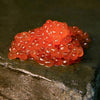Spending time in the Pennsylvanian outdoors is a fond childhood memory of Steve’s, and we’re confident this is the same for many of you. We know we have fishermen among our readership; where are your first fishing memories? Steve’s are with his father as a kid, at Beaver Creek, right below his house. That bit was fishable and a huge part of his childhood adventures, but it flows into the dead Catawissa Creek, where all life stopped. Many of us had the opportunities as a kid to enjoy wild places that are slowly but surely disappearing. This is perhaps the scariest part about Pebble Mine: setting the precedent that these wild places standing strong today are at risk, that the next generation may not have access to any of them, because they may not exist.


Due to efforts by local environmentalists and the Catawissa Creek Restoration Association, the creek is again starting to support some fish. The limestone tanks that now stand at the headwaters help to create a watershed capable of supporting life. For this, we are grateful. This history begs an important question, however.

This small, hometown creek was never the lifeblood that the Bristol Bay watershed is, of course, but the concept is generally the same. Mines threaten lively ecosystems and are impermanent; after a mining project extracts its goods, restoration of the original ecosystem is desired, if not required, and expensive. If you grew up in Columbia County,like Wild for Salmon’s founders, chances are you witnessed these consequences first hand, as well.
By consequences, we mean dead fish, barren ecosystems, missed fishing opportunities, ugly riverbanks...these are what make the Pebble proposal so appalling to us. Because we have been fortunate enough to witness the precious, largely untouched rivers of Alaska and, in the same lifetime, the ugliness of mining projects locally. It hurts to realize that this issue is even up for debate.
This early fall, our customers have been hearing plenty of news about the fate of Bristol Bay and many of you have joined us in our fight to preserve and protect this place and source for our wild salmon. Thank you for that. You heard the passion in our posts, likely felt it yourselves; it is this passion for wild spaces and preservation that led us to plead with our legislators and with you to put an end to Pebble Mine. As of Wednesday, October 19th, United Tribes of Bristol Bay shared that three quarters of a million people submitted comments to the EPA regarding Pebble Mine! Many of us have already witnessed the end to too much of our natural world. For those of us here in Columbia County, that might mean, Catawissa Creek.



Let this paradigm be a lesson, let us learn from it.
Let Ava and Tommy grow up and come to know these wild places as well. You may remember, as Steve does, chasing trout in this watershed as a child. You may also remember, as Steve does, noticing the consequences of mining take over this playground. What was once a water source for the Catawissa Water Company still hosts five mining permits today. As we consider the wild places that were our childhood playgrounds, let their story influence how we move forth in the world, how we embrace the wildness that still remains.




 Wild Alaska Salmon
Wild Alaska Salmon Alaska Salmon Burgers
Alaska Salmon Burgers Smoked Salmon & Seafood
Smoked Salmon & Seafood Wild Alaska Whitefish
Wild Alaska Whitefish Wild Shellfish & Shrimp
Wild Shellfish & Shrimp Wild Albacore Tuna
Wild Albacore Tuna Canned Seafood
Canned Seafood Meal Box & Samplers
Meal Box & Samplers Pet Products
Pet Products Gifts
Gifts Specialty
Specialty Wholesale Ordering
Wholesale Ordering